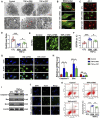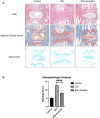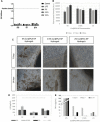Natural products can modulate inflammation in intervertebral disc degeneration
- PMID: 36874009
- PMCID: PMC9978229
- DOI: 10.3389/fphar.2023.1150835
Natural products can modulate inflammation in intervertebral disc degeneration
Abstract
Intervertebral discs (IVDs) play a crucial role in maintaining normal vertebral anatomy as well as mobile function. Intervertebral disc degeneration (IDD) is a common clinical symptom and is an important cause of low back pain (LBP). IDD is initially considered to be associated with aging and abnormal mechanical loads. However, over recent years, researchers have discovered that IDD is caused by a variety of mechanisms, including persistent inflammation, functional cell loss, accelerated extracellular matrix decomposition, the imbalance of functional components, and genetic metabolic disorders. Of these, inflammation is thought to interact with other mechanisms and is closely associated with the production of pain. Considering the key role of inflammation in IDD, the modulation of inflammation provides us with new options for mitigating the progression of degeneration and may even cause reversal. Many natural substances possess anti-inflammatory functions. Due to the wide availability of such substances, it is important that we screen and identify natural agents that are capable of regulating IVD inflammation. In fact, many studies have demonstrated the potential clinical application of natural substances for the regulation of inflammation in IDD; some of these have been proven to have excellent biosafety. In this review, we summarize the mechanisms and interactions that are responsible for inflammation in IDD and review the application of natural products for the modulation of degenerative disc inflammation.
Keywords: inflammation; intervertebral disc; intervertebral disc degeneration; lower back pain; natural product.
Copyright © 2023 Liu, Zhu, Liu and Fu.
Conflict of interest statement
The authors declare that the research was conducted in the absence of any commercial or financial relationships that could be construed as a potential conflict of interest.
Figures






References
Publication types
LinkOut - more resources
Full Text Sources
Miscellaneous

